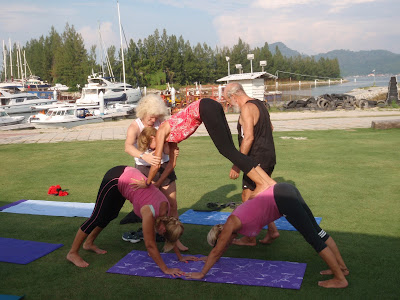 |
| Robot Spray Gun |
The next piece of the puzzle goes
a long way toward being able to spray without mixing pre-catalyzed batches of
material. Factory and robotic production
of fiberglass resin products have been using external catalyzation. This is where the resin and catalyst are
mixed in the airstream after leaving the sprayer.
 |
| Binks 2100GW |
Binks makes a few external
catalyzing hand spray guns. I initially
considered using the 2100GW. This gun
has a small catalyst bottle attached to the side of the gun. It seemed to be fine for small repairs but
one thing you don't want to do is run out of catalyst while spraying. This would cause under or no catalyzation at
all. I also felt that it doesn't allow
using the gun in all positions since the catalyst could be sloshing around in
the bottle and the pickup tube may become uncovered and suck up air.
 |
| Binks Mach 1 PCX |
Fortunately, Binks also makes the Mach 1 PCX. It is a very specialty product and since only
a few are sold, the price is quite expensive.
Much more than I ever thought I would spend on a spray gun. It is an HVLP (High Volume, Low Pressure) system. The resin is routed to the gun by a hose from
a pressure pot. The catalyst is also
routed to the gun through a second hose from it's pressure pot. The air comes through a third hose to provide
atomization. This allows for spraying in
any position and the catalyst quantity is only limited by the size of you tank.
The orifice size is 2.4 mm
which is sufficiently large enough to spray high viscosity material like
gelcoat. Car paint orifices are half
that size which is why those guns will not work unless the gelcoat is really
thinned out.
Dave Deakyne
David Deakyne
David J. Deakyne
Dave Deakyne
Wallingford Dave Deakyne
David Deakyne
David J. Deakyne
Dave Deakyne
Wallingford
David Deakyne
David J. Deakyne
Dave Deakyne
Wallingford Dave Deakyne
David Deakyne
David J. Deakyne
Dave Deakyne
Wallingford



















